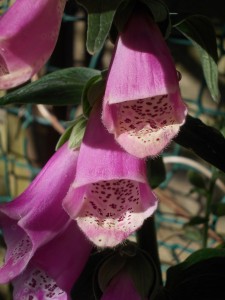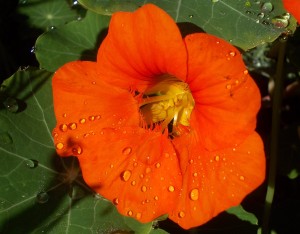
My foxgloves are beautifully in flower. They began around the 11th of May and are now in full bloom. Most are dressed in traditional purple with the insides of the “gloves” spotted deep purple in white areas, as if the pigment had been dragged together into clumps. Some are in unspotted white: creamy when closed, dazzling greenish-white in full bloom. This is seemingly a naturally-occurring variation, with perhaps a single mutation preventing pigment development.
Nothing extraordinary there? The clue is the date. Back in the 1940s in Dorset, John Stuart Collis calmly states that Foxgloves come out in August.
The odd science of Phenology tracks the dates when natural events occur in different years, thereby building up an accurate picture of changes in many species. The idea is seen in one of the classics of natural history, Gilbert White’s Natural History of Selborne (1789), which includes observations of the first Swallow to arrive, and so forth, and in some editions actual tables of phenological observations. These are described as “A comparative view of the Naturalist’s Calendar as kept at Selborne in Hampshire by the late Rev. Gilbert White MA and at Catsfield near Battle in Sussex by William Markwick Esq FLS from the year 1768 to the year 1793.” For the record, White notes Foxglove from May 30 to June 22; Markwick notes the same species from May 23 to June 15.
So in this case the anomalous datum looks more like Collis’s than mine. Still, flowering does seem to be earlier; explanations could include that London is warmer than the countryside, that plant varieties may differ, and climate change.
Mind you, even Gilbert White would have had a hard time recording the phenology of the Nasturtium this year. Without a winter frost, which usually kills them in December, the plants survived all through the winter, and have remained in flower essentially continuously. “1 January—31 December”, I suppose.

